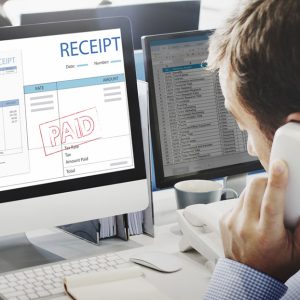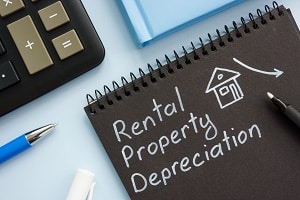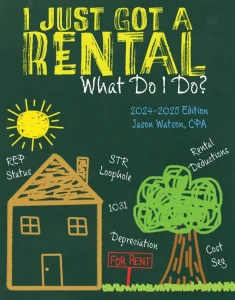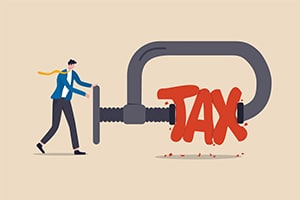
Business Advisory Services
Everything you need to help you launch your new business entity from business entity selection to multiple-entity business structures.
Hey - Our site just had a makeover and we are sorting through the hiccups!
Hey - Our site just had a makeover and we are sorting through the hiccups!

Everything you need to help you launch your new business entity from business entity selection to multiple-entity business structures.

Designed for rental property owners where WCG CPAs & Advisors supports you as your real estate CPA.

Everything you need from tax return preparation for your small business to your rental to your corporation is here.

WCG’s primary objective is to help you to feel comfortable about engaging with us
Table Of Contents

Keep in mind that all these blurbs are shrunk down versions of sections from our rental property book, “I Just Got A Rental, What Do I Do?”
Real estate investors often start with “what tax deductions can I take?” The foundation question is “how do I leverage those deductions?” If your modified adjusted gross income (MAGI) is above $150,000, you’re likely boxed in by passive activity loss (PAL) rules, and ordinary rental losses get suspended on Form 8582 unless you (a) qualify for REPS, (b) qualify for the STR loophole (≤7-day average stay with material participation), or (c) have other passive income to net against.
Once PAL limits are set aside with (a) or (b) above or you have a (c) situation, a cost segregation study can reclassify parts of the building to shorter-life Section 1245 property, enabling accelerated deductions. Layer in bonus depreciation (100% again for 2025–2030), and a $400,000 building might yield a $70,000–$90,000 first-year deduction in typical fact patterns. That’s cash-flow, not magic; you’re pulling future depreciation forward.
Sidebar: Where did the $70,000 to $90,000 come from? With 100% bonus depreciation, about 18% to 22% of the building will be accelerated. Where did the 18% to 22% come from? WCG CPAs & Advisors especially our Rental Expert Pod has seen thousands of cost segregation reports. We could say tens of thousands, but that would be a lie.
Supporting strategies—home office (to convert local trips from commuting to tax deductible business travel related to your rental property) and auto—can add smaller deductions. Just keep the Section 162 “ordinary and necessary” standard in mind; aggressive vehicle structures (e.g., luxury car self-rental from you to the rental) demand tight documentation and carry related-party risk. Finally, don’t forget maintenance days: when “substantially all” of a day is bona fide repair/maintenance, it generally doesn’t count as a personal-use day under vacation home rules—useful for lifestyle alignment without blowing the tax profile.
Speaking of blowing up, click on the button below to get the blown up version from our rental property book of this summary.
This is the edgy one: do a cost seg + bonus as an STR, then pivot to second home soon after. Can it work? Sometimes—but risk depends on timing and facts, and how another person (read, IRS agent) would view your intentions.
Key mechanics: Section 179 can be recaptured as ordinary income when business use falls to 50% or less (predominant use), potentially at the moment of conversion. Bonus depreciation typically avoids this midstream recapture (except for listed property like passenger autos and certain electronics, so basically unrelated to rental properties); instead, bonus is recaptured at sale unless you execute a 1031 like-kind exchange.
Risk spectrum:
Practical takeaway: if your long-term vision or retirement plan includes eventual personal use, bias to bonus depreciation over Section 179 and stretch the horizon to support legitimate business purpose and continuity.
Also mind state decoupling: many states disallow bonus depreciation but allow Section 179 (with limits). The optimal mix changes once you look at federal + state combined.
This one is often overlooked! Qualified Improvement Property (QIP) = interior, non-structural improvements to nonresidential buildings after the property is placed in service. QIP is 15-year property, so it’s eligible for bonus depreciation and also Section 179. The twist: a rental proeprty can be nonresidential when more than half of units are used on a transient basis—practically, an average stay of ≤30 days. That unlocks QIP treatment for things like kitchen and bath renovations (post-in-service date), which can be expensed via bonus (or Section 179 where appropriate).
Sidebar: Why does this rule mention “more than half the units?” There are common situations where commercial real estate has retail stores on the first floor with several floors above dedicated to residential (and in some cases, nonresidential) living. You could also have a large complex with many units, and some are short-term while others are mid- to long-term. For common real estate investors, this is a not an issue.
Caveats: touch structural framework, enlarge the building, or add elevators/escalators, and you’re out—those costs move to 27.5/39-year schedules depending on the residential versus nonresidential use. Sequence matters: (1) place the property in service as an STR (ready and available, advertised), (2) get actual guest stays to establish the STR profile, then (3) take it offline temporarily for qualified interior work. That ordering supports the nonresidential/QIP position.
Another Sidebar: Taking a rental property offline does not take the property out of service provided you intend to rent it again. This can be confusing. Once a rental property is placed in service for its intended income-producing purpose, it remains in service until the intent changes. This is a big deal when it comes to renovations since operating expenses can still be deducted during construction when the rental property is offline. Your material participation time continues as well!
Bonus vs Section 179 on QIP? Consider cash-flow needs, state conformity, entity-level traps (e.g., Section 179 can’t create a loss at the partnership level and is suspended at the entity, while bonus can create a loss), and whether future business use could dip below 50% (recapture risk for Section 179). And if you’re replacing HVAC / roof on nonresidential property: those aren’t QIP, but Section 179 may still apply via the statute’s carve-outs.
We just dropped a huge comment at the end with HVAC and roof replacements on nonresidential property under Section 179. There is a special carve out to allow for this. Click on the button below for a deeper dive.
This section from our book got a big makeover to include more examples, a fun table and some additional considerations. We hardly to it justice with this tiny recap-
Two primary tools compress time: bonus depreciation (IRC Section 168(k)) and IRC Section 179. After phasing down to 60% in 2024, bonus is scheduled at 100% for 2025–2030 under current law, the One Big Beautiful Bill Act. Bonus depreciation is unlimited, applies to property with ≤20-year lives, and can create losses (useful with REPS/STR). Section 179 is elective expensing with annual dollar limits, can’t create losses at the entity level (notably in partnerships), and is subject to recapture if predominant business use later falls to ≤50%.
Sidebar: Section 179 expenses that create losses on rental properties personally owned by you (or your revocable trust) and reported on Schedule E which also bypass passive activity loss limits with short-term rental loophole or real estate professional status can offset W-2 income. Read that again please since that is an incredibly long sentence but an important one. This same rental in a partnership (multi-member LLC, for example) is trapped.
Planning levers (sounds fancy):
Here is a great summary table from this section in our book-
| Asset (the thing you want to deduct) | 179 | Bonus | Notes |
| 5-Year and 7-Year Property | Yes | Yes | Standard 1245 property |
| Qualified Improvement Property (QIP, interior improvement) | Yes | Yes | Nonresidential only |
| Kitchen Reno, Bathroom Reno as QIP | Yes | Yes | Nonresidential only |
| Roof | Yes | No | Nonresidential, Sect 179 carve out |
| Furnace, Air Conditioner, Mini Split (HVAC) | Yes | No | Nonresidential, Sect 179 carve out |
| Appliances, Window Air Conditioner | Yes | Yes | Standard 1245 property |
| Water Heater (permanent) | No | No | Part of building, but have safe harbors |
| Water Heater (point of service, which is nice) | Yes | Yes | Standard 1245 property |
| Alarm, Security Systems | Yes | No | Nonresidential, Sect 179 carve out |
| Land Improvements (sidewalks, fences, landscaping, pools) | No | Yes | 15-year 1250 property |
| Temporary Fencing, Playground Equipment, Nets / Hoops | Yes | Yes | Standard 1245 property |
| Hot Tub (free-standing on slab) | Yes | Yes | Standard 1245 property |
| Hot Tub (in ground or integrated with deck) | No | Yes | Land Improvement, 15-year 1250 property |
| Foreign Rental Property | No | No | Not eligible outside U.S. |
Bottom line: you can mix Section 179 first, then apply bonus depreciation to the remainder for a tailored deduction profile—especially handy when coordinating entity limits, PAL outcomes, and state rules, and blah blah blah.

Do you use 100% bonus depreciation or Section 179? What are the problems with bonus depreciation? Any pitfalls with Section 179? What property is eligible for accelerated depreciation?
WCG’s consistent guidance holds: wealth building first, tax strategy second, lifestyle aligned throughout. If you can (1) clear PAL limits with REPS or STR material participation, (2) time cost seg + bonus against high-income years, and (3) keep an eye on state conformity and future use (to avoid Section 179 recapture), you’ve set the table for both immediate cash-flow relief and long-term equity growth. From there, tactical choices with various levels of risk—QIP renovations, home office/travel structuring, auto policy, and maintenance-day planning—become the icing on the tax cake that keeps your rental property tax strategy tight without getting too nutty. Ok, perhaps we went to far with that last part.

Our rental property book starts with entity structures and moves into asset management such as acquisition, cost segregation, rental safe harbors, repairs versus improvements, accelerated depreciation, partial asset disposition, and 1031 like-kind exchange. From there we discuss various rental considerations like passive activity losses, short-term rental loophole, real estate professional status, and material participation including what time counts, and what time doesn’t count.
Finally, the good stuff! Rental property tax deductions such as travel, meals, automobiles, interest tracing, home office and common expenses. Fun!
It is available in paperback for $19.95 from Amazon and as an eBook for Kindle for 15.95. Our book is also available for purchase as a PDF from ClickBank for $12.95.
WCG has a team of real estate CPAs ready to assist you with your rental property and real estate investments. Very few tax professionals and CPA firms specialize in real estate to provide you solid consultation, tax planning including tax reduction strategies, and tax return preparation. We are experts in-
This book is written with the general rental property in mind. Too many resources tell you the general rule but don’t bother to back it up with Internal Revenue Code, Treasury Regulations and Tax Court cases. Our book lays it all out, explains the madness, adds some humor and various conundrums. Example? Water heaters and hot tubs- crazy stuff to consider.
Enjoy! And please send us all comments, hang-ups and static. This book is as much yours as it is ours, except the tiny royalty part- that’s ours. Stop by and we’ll buy you a beer with the pennies.
If you buy our 480-page book and think that we didn’t help you understand rental property tax laws, let us know. We never want you to feel like you wasted your money. If you are ready to add some insightful reading into your day, click on one of the preferred formats. Amazon is processed by Amazon, and the PDF is safely processed by ClickBank who will email you the PDF as an attachment.
 |
 |
 |
| $19.95 | $15.95 | $12.95 |

Want to talk to us about tax return preparation, tax planning and strategy, and all the other things that go with it? We are eager to assist! The button below takes you to our Getting Started webpage, but if you want to talk first, please give us a call at 719-387-9800 or schedule an discovery meeting.
Jason Watson, CPA is a Partner and the CEO of WCG CPAs & Advisors, a boutique consultation and tax preparation CPA firm serving clients nationwide with 7 partners and over 90 tax and accounting professionals specializing in small business owners and real estate investors located in Colorado Springs.
He is the author of Taxpayer’s Comprehensive Guide on LLC’s and S Corps and I Just Got a Rental, What Do I Do? which are available online and from mostly average retailers.
Table Of Contents

Tax planning season is here! Let's schedule a time to review tax reduction strategies and generate a mock tax return.

Tired of maintaining your own books? Seems like a chore to offload?
Did you have questions about how this works? When cost segregation makes sense and when it doesn't? Curious about how to deduct that kitchen renovation in full? Have a specific question about real estate and need a tax expert?
The tax advisors, business consultants and rental property experts at WCG CPAs & Advisors are not salespeople; we are not putting lipstick on a pig expecting you to love it. Our job remains being professionally detached, giving you information and letting you decide within our ethical guidelines and your risk profiles.
We see far too many crazy schemes and half-baked ideas from attorneys and wealth managers. In some cases, they are good ideas. In most cases, all the entities, layering and mixed ownership is only the illusion of precision. As Chris Rock says, just because you can drive your car with your feet doesn’t make it a good idea. In other words, let’s not automatically convert “you can” into “you must.”
Let’s chat so you can be smart about it.
We typically schedule a 20-minute complimentary quick chat with one of our Partners or our amazing Senior Tax Professionals to determine if we are a good fit for each other, and how an engagement with our team looks. Tax returns only? Business advisory? Tax strategy and planning? Rental property support?

Everything you need to help you launch your new business entity from business entity selection to multiple-entity business structures.

Designed for rental property owners where WCG CPAs & Advisors supports you as your real estate CPA.

Everything you need from tax return preparation for your small business to your rental to your corporation is here.

WCG’s primary objective is to help you to feel comfortable about engaging with us

